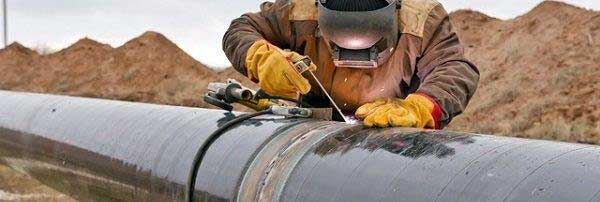What is a Golden Weld?
If a weld on pressure equipment cannot be subjected to a pressure test (hydrostatic or pneumatic) even though the pressure equipment design code requires it, it is called a "Golden Weld." In that case, the steps, as described in this article, must be followed at a minimum.
Requirements for a Golden Weld
A hydrostatic pressure test should always be performed after welding. However, it is permissible not to perform the hydrostatic pressure test if it is harmful or practically impossible. Some typical examples..
- For overhead pipes, the weight becomes too high for the span, there is a risk of deflection and bending.
- The presence of residual water is unacceptable for the process and/or due to the presence of many branches at the bottom, which cannot be adequately drained and dried.
- The pipe cannot be blocked and tested in practical test lengths.
- Due to environmental restrictions caused by large amounts of contaminated water.
If a hydrostatic test cannot be performed, the first alternative is a gas-filled test (usually with air or with nitrogen), as stated in the design code. However, this is not a "standard" alternative. I.e., a separate plan of action must be made due to safety concerns.
If a gas press test is also not a realistic option, the "Golden Weld" procedure should be followed as a last option. The fit and the weld itself must meet all of the following conditions..
- The weld must be made as a butt weld and fully welded.
- The weld must be a pipe-to-pipe joint, a pipe bend, pipe tee or pipe reduction and the like is not allowed.
- Pipe joints shall be stress-free with respect to each other.
- The weld must be laid in at least 2 layers.
- The weld must be easily accessible for the welding method and NDT techniques to be applied. A point of interest when designing/recording the work is the location of the joint.

Execution
Perform NDT prior to welding: If the Golden Weld connects to an old(er) pipe, it is recommended to pre-inspect the old pipe with UT for inclusions & laminations and examine for sufficient residual wall thickness. If there are inclusions or the wall thickness has decreased, another location for the Golden Weld can be chosen.
Fit-up and welding Tack welding should preferably be carried out with bullets. Tack welding with a bridge is permitted for welding in pipes with a wall thickness less than or equal to 4 mm, if it is not possible to tack with bullets.
In all cases, tack welds must NOT be included in the welds, they MUST be removed just before welding the root layer.
Bullets must be of weldable steel grade and of the same material group as the base material. Make tack welds only on the weld preparation. The size of the bullets should be proportional to the size of the weld edge.
Inspection and NDT after welding
Inspection and NDT shall be performed guided by the design code of the system and its requirements for NDT execution and acceptance.
If the weld seam(s) undergo heat treatment after welding, NDT shall be performed after the heat treatment.
If the base material - welding process combination is prone to cracking, such as hydrogen cracking, a minimum applicable waiting time must be maintained before NDT is performed.

Repair
During preparation, it is necessary to determine how to deal with possible weld failure. The options are..
1. Repair according to used WPS, or
2. create a separate repair procedure.
I.e. depending on the circumstances, the type of defect and the location of the defect in the weld. The chosen option should always be reviewed by the welding expert and recorded in the Inspection Test Plan (ITP).
Leak tightness test
Before paint, coating and/or insulation is applied, a leak tightness test must be performed with the system filled with the medium and under operating pressure. The leak tightness test must be performed by a qualified inspector.
If the medium is pumped at elevated temperature, the leak tightness test with medium is not always possible. If the medium is pumped at reduced pressure, the leak tightness test is only possible with ultrasonic listening devices.
If a leak tightness test is not possible or is canceled, this is always noted with justification in the ITP.
Remark(s) of the Author...

The article above describes the minimum steps to be taken, for a Golden Weld.
It is certainly also conceivable that different and or more guidelines and regulations will apply to some customers.